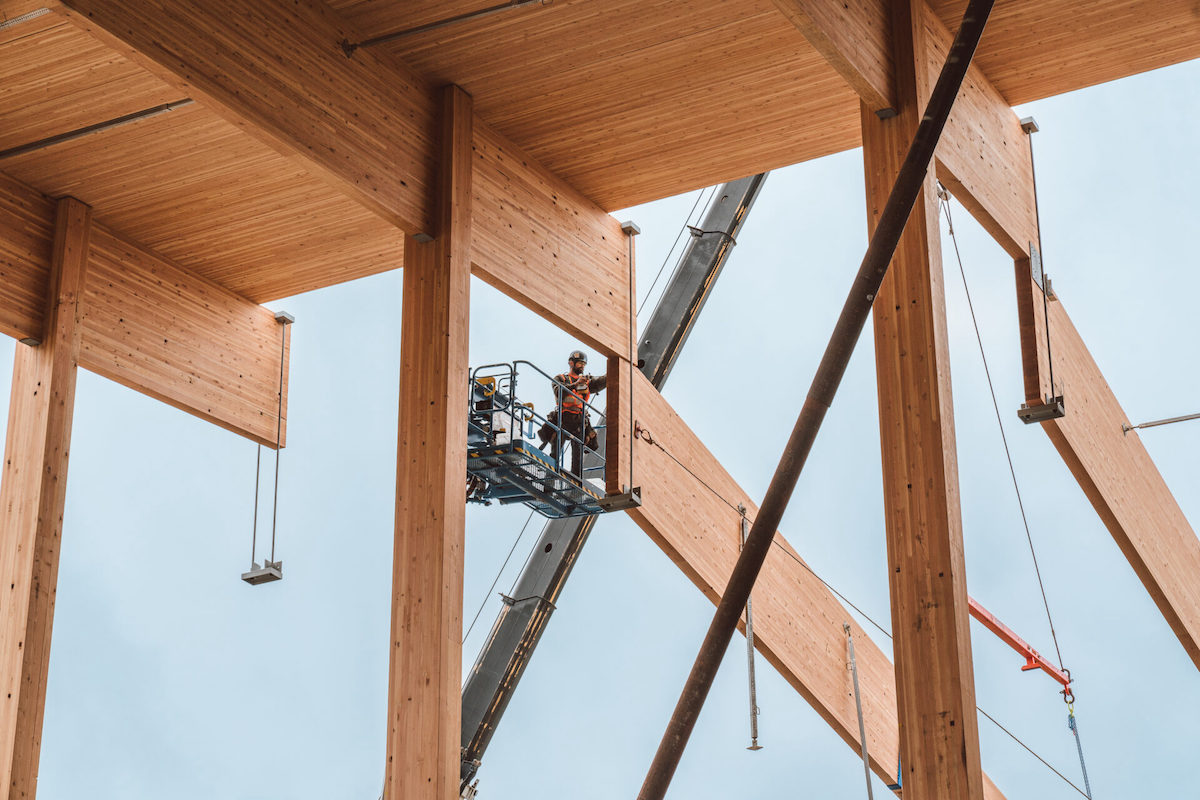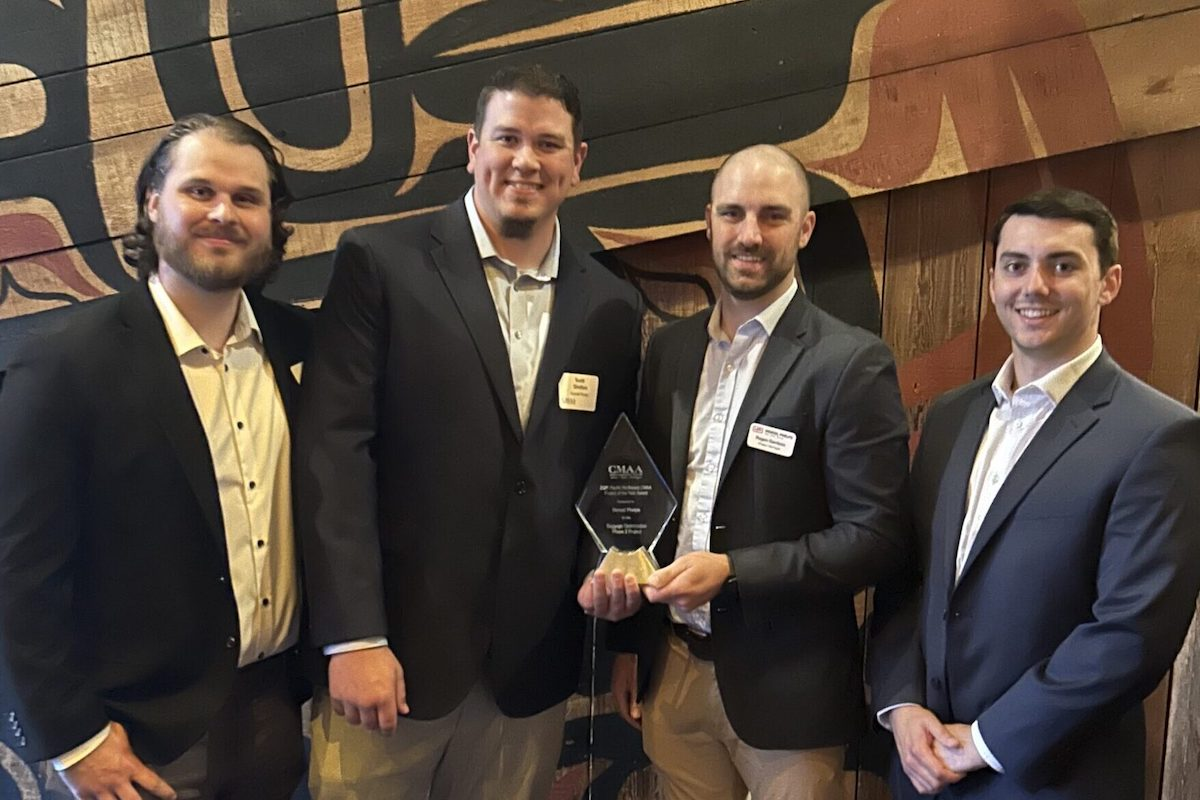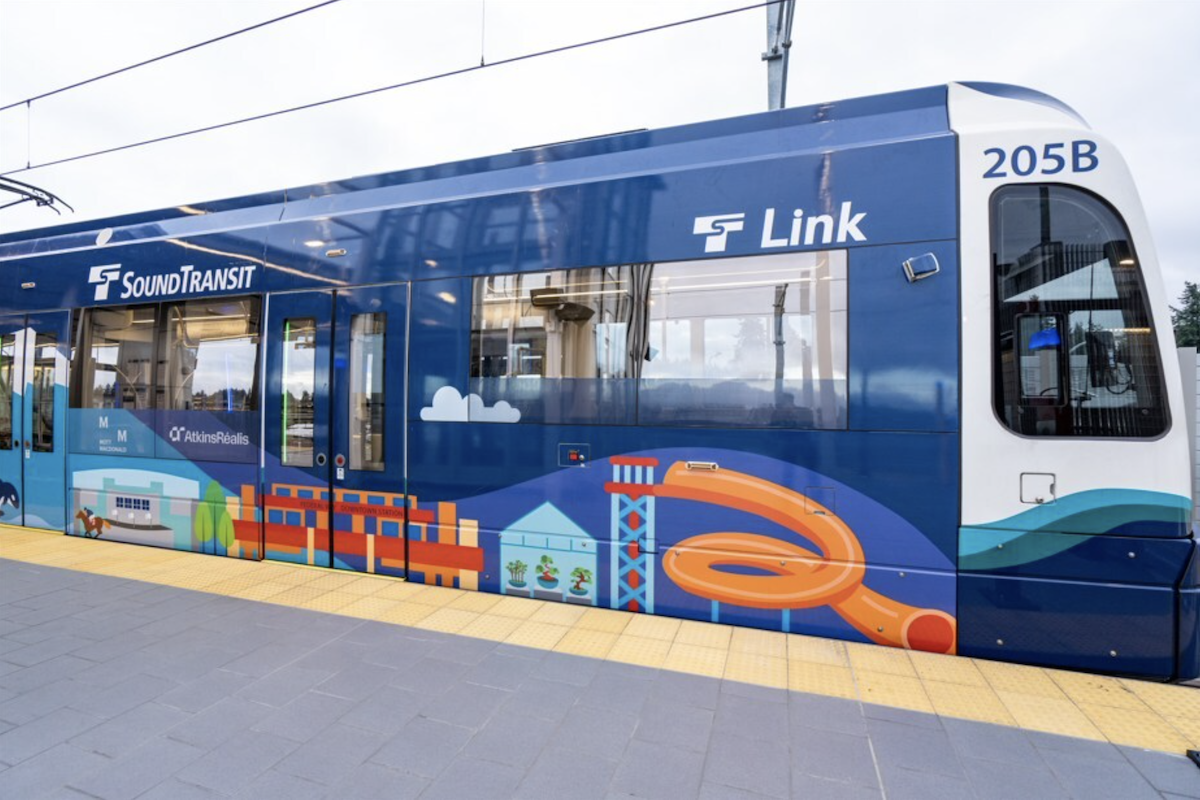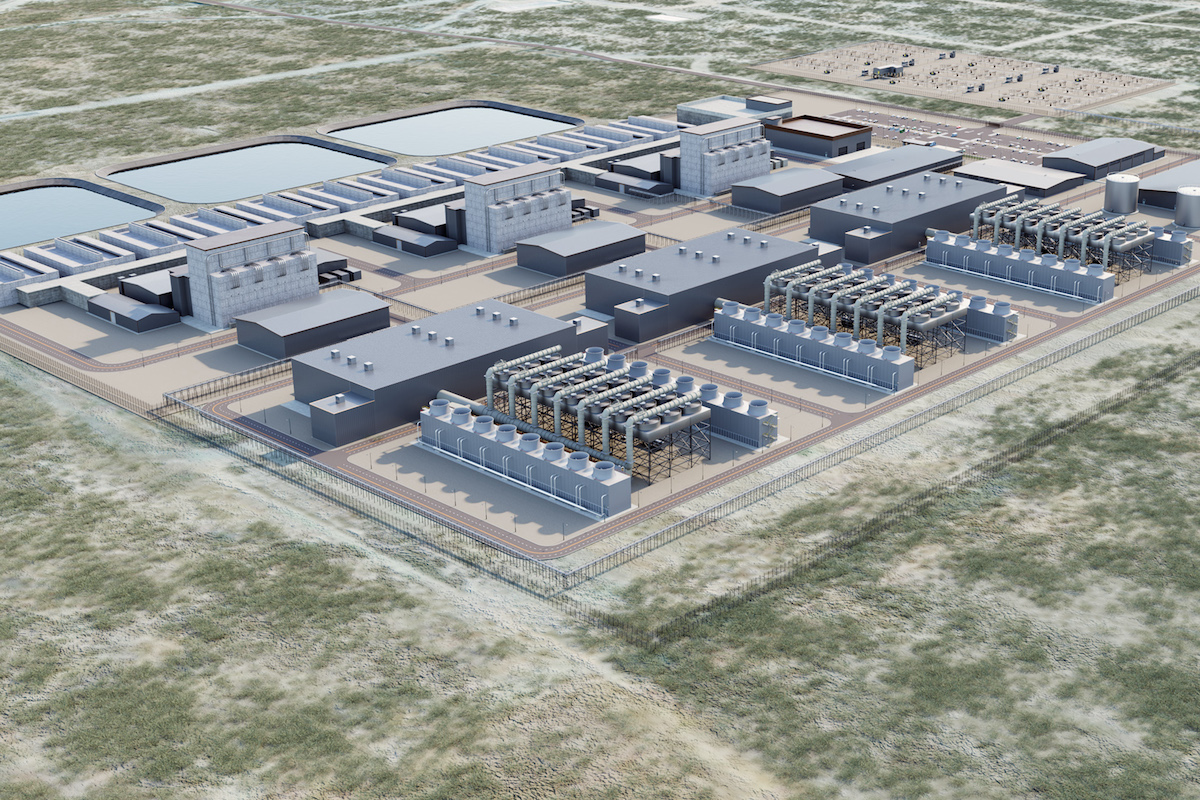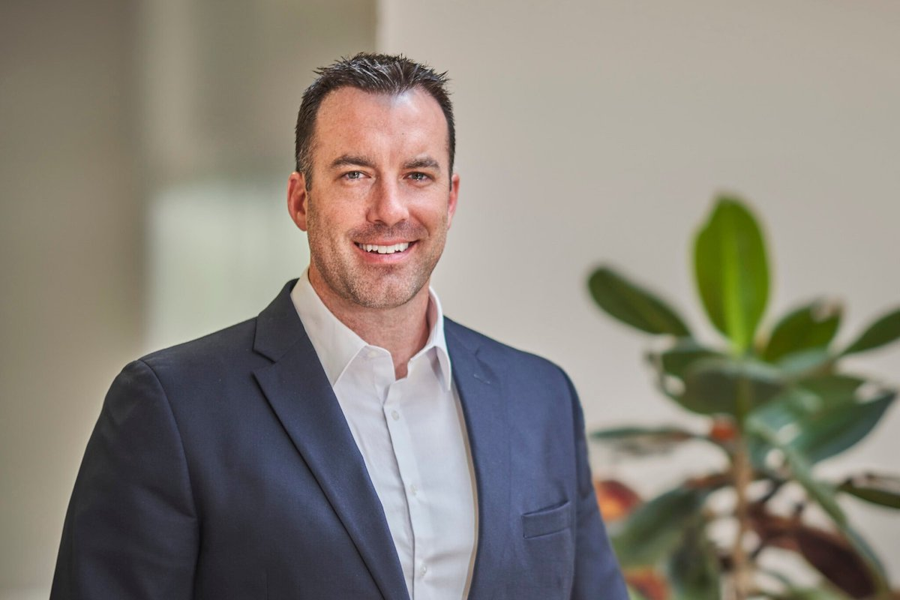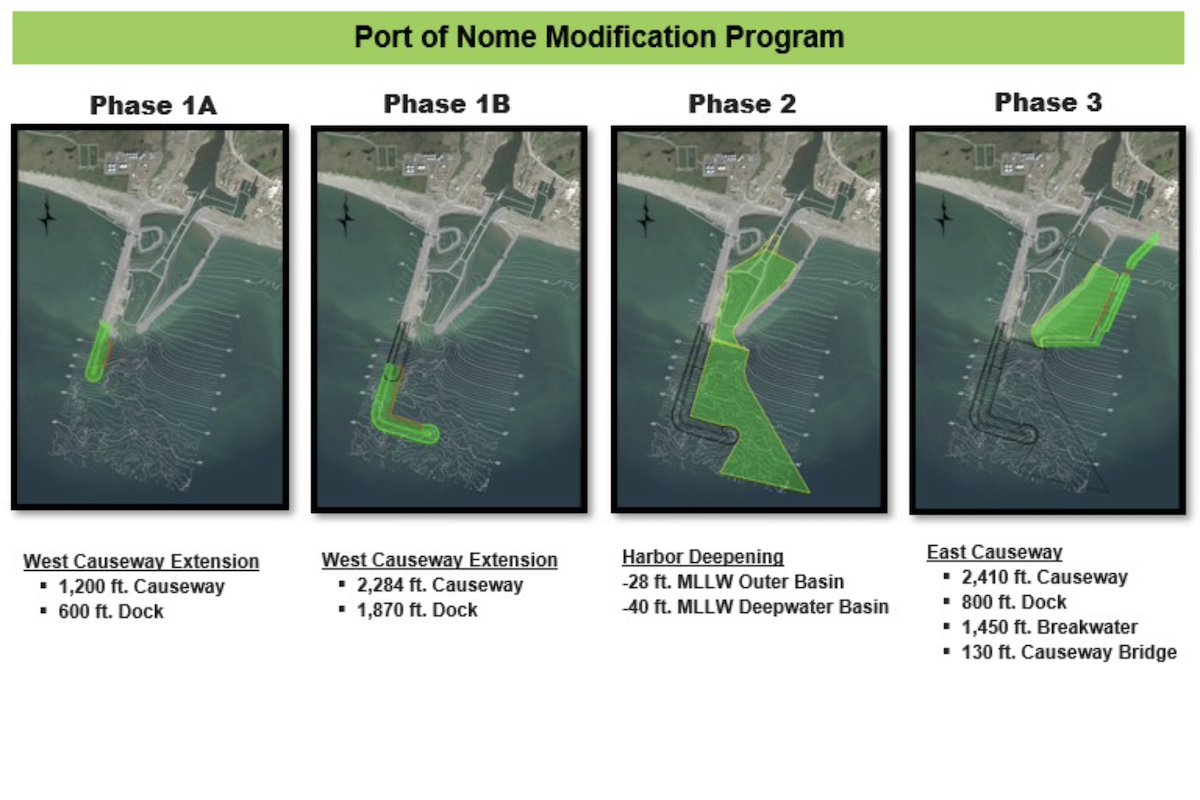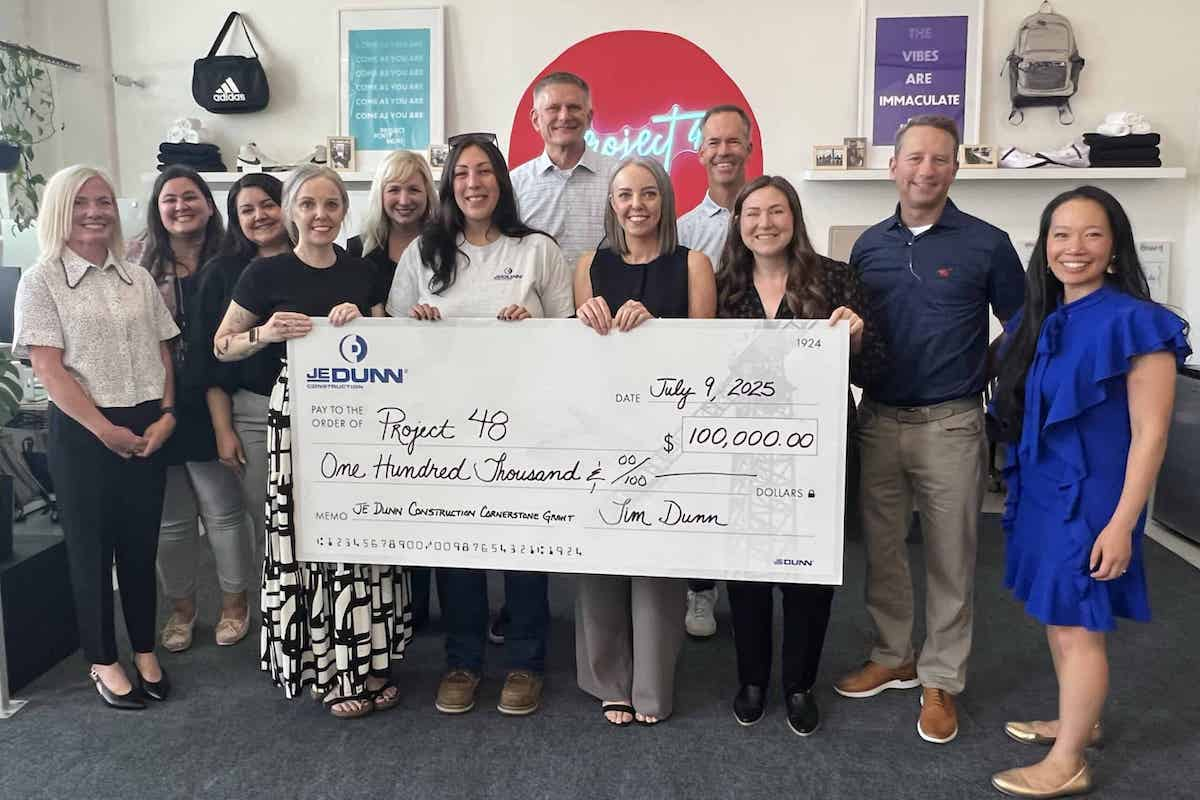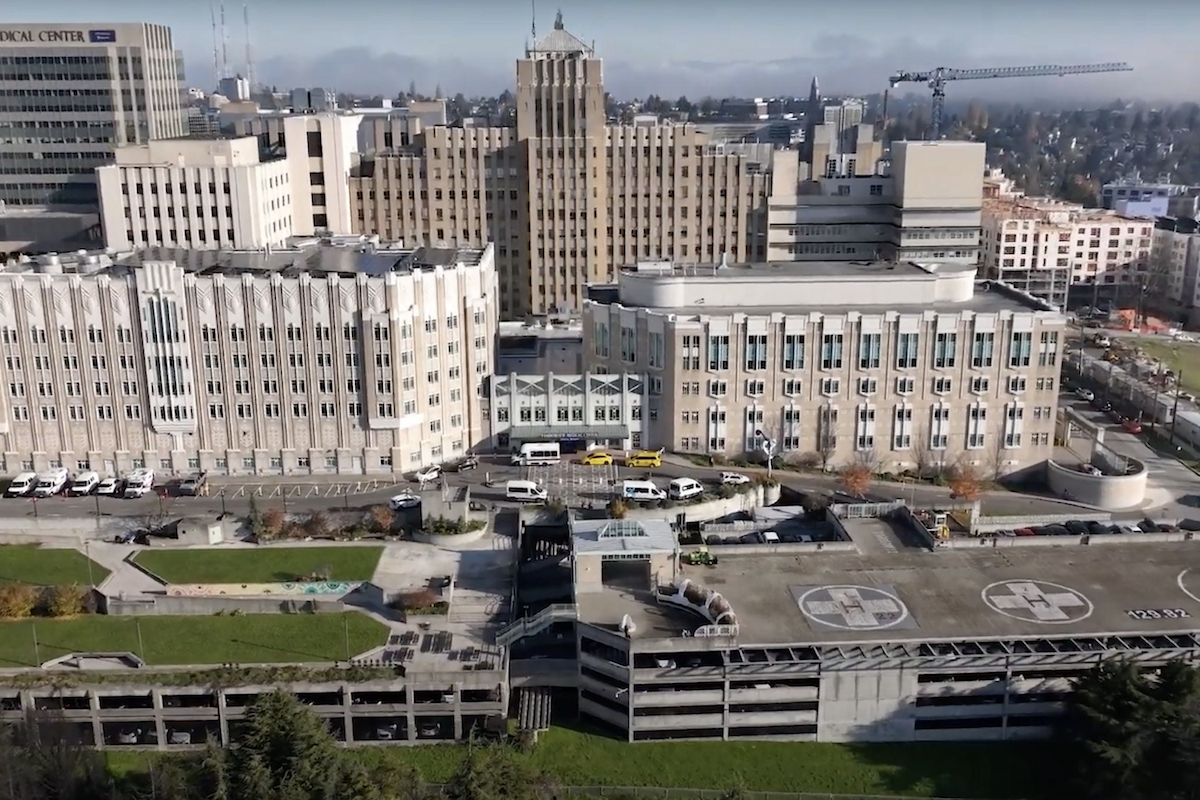“Built upon our deep roots in the Spokane region, this new facility represents one fulfillment of our shared promise to work together to attract, grow, and keep the next generations of health care professionals,” said Thayne M. McCulloh, President of Gonzaga University. “Expanding our collaboration to include a vital partner — McKinstry’s Emerald Initiative — has resulted in an exceptional new home [for] this collective work to continue.”
The 90,000-square-foot building, located in Spokane’s University District, is the academic home to the UW School of Medicine (UWSOM) Spokane and its 120 first- and second-year students, Gonzaga’s (GU’s) Department of Human Physiology, and more than 500 GU undergraduates in nursing and health sciences, plus faculty and staff. The UW’s MEDEX Northwest physician assistant program delivers instruction to 30-plus students in the adjacent SIERR building.
“This new building further strengthens the UW’s commitment to Spokane and our Health Partnership with Gonzaga, and as a nexus for students, faculty, members of the region’s health care and health sciences professions, we are stronger together,” said Ana Mari Cauce, University of Washington President. “Yet the impact will go far beyond its walls as future generations of doctors and health care professionals provide excellent care to patients across eastern Washington and beyond.”
In July, UW students began classes in the four-story building and were joined by GU undergraduate students in late August.

| Your local Metso Minerals Industries Inc dealer |
|---|
| PacWest Machinery |
| Westate Machinery Co |
“It’s an amazing building,” said Samira Pardakhtim, first-year UW medical student. “I feel like it’s so smartly engineered,” adding that the big rooms and windows, ability to size up and down classrooms, and advanced technology creates a great learning environment.
The building, developed by Emerald Initiative, features modern classrooms, an anatomy suite, high-tech research labs, and integrated administrative offices. It also includes multiple areas for students to gather, from an outdoor rooftop deck to small quiet spaces for collaboration or independent study. Beyond the medical and health science education features, CollinsWoerman, Bouten Construction, and McKinstry worked closely together to design and build innovative systems that integrate environmental sustainability into the structure and style of the facility.
The ultra-efficient building utilizes an open-loop ground source heat pump system that extracts water from the Spokane aquifer to provide a constant water temperature that the building’s mechanical systems use to heat and cool the building.
“With a 50-year history of excellence in medical education throughout eastern Washington, this world-class health and medical education building will ensure that UW medical students in Spokane have access to an exceptional learning environment and the tools necessary to become the best physicians and leaders of tomorrow,” said Timothy H. Dellit, M.D., interim Dean, UW School of Medicine and interim CEO, UW Medicine.
In addition to being a place where students and faculty collaborate and learn, the building serves a greater purpose — to help advance health care research and solutions that will give rural communities better access to affordable, quality care.

| Your local Superior dealer |
|---|
| Westate Machinery Co |
The building is part of the Emerald Initiative’s mission to build a health care industry cluster in the heart of Spokane. Emerald Initiative, an independently owned affiliate of McKinstry, envisions, develops, owns, and operates commercial real estate and alternative energy infrastructure. The organization seeks to facilitate biomedical research in Spokane to ultimately attract new industries, jobs, and investments to the area.
“We are incredibly proud of this partnership, its commitment to health care research and accessibility, and what this building means for the future of health education and innovation in the region,” said Dean Allen, McKinstry CEO and Emerald Initiative Managing Partner. “This continued investment in Spokane’s health sciences community will help it remain a top source for critical thinking, technology, and jobs in the future.”
Developing a shared facility was one of the aspirations expressed between the two universities when they forged a Health Partnership in 2016 to promote greater health and serve the growing need for more high-quality health care providers. When the Health Partnership was first formed, UWSOM was based in the Schoenberg Center on Gonzaga’s campus.
















